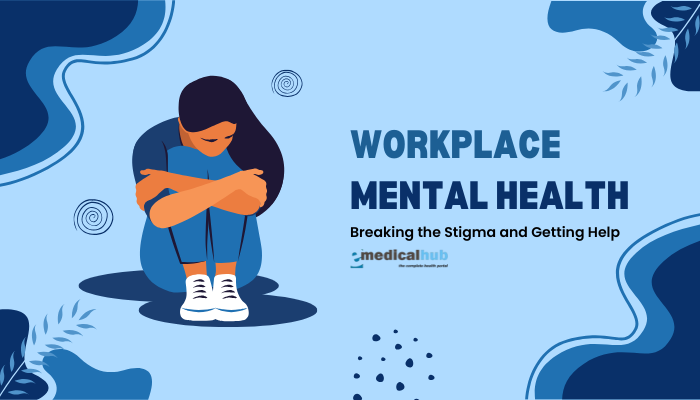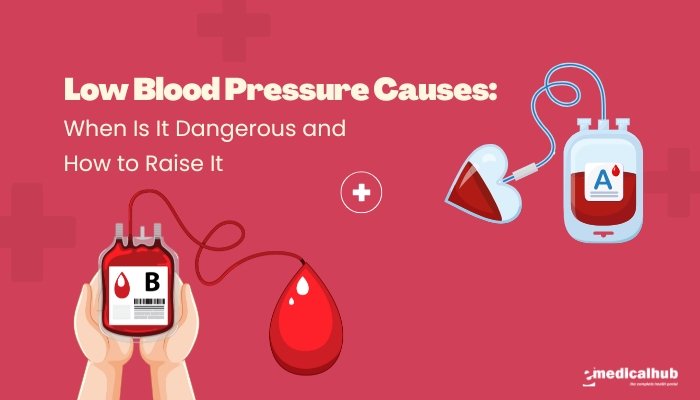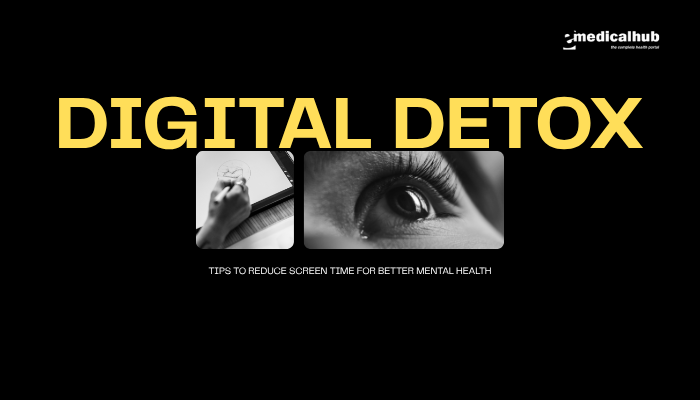Introduction
People spend a substantial part of their lives at work, and it is no wonder that mental health challenges often manifest or intensify in workplace settings. Stress from tight deadlines, interpersonal conflicts, job insecurity, and long hours can contribute to conditions like anxiety, depression, or burnout.
Despite the prevalence of mental health issues, stigma remains a major barrier that prevents many employees from disclosing problems or seeking support. This stigma can perpetuate a cycle where conditions worsen, impacting performance, morale, and relationships.
Fortunately, growing awareness has led to gradual cultural shifts—many employers now emphasize well-being initiatives, from Employee Assistance Programs (EAPs) to mindfulness workshops, and some actively encourage open discussions about mental health. Still, real obstacles remain.
In this article, we explore how workplace stigma around mental health forms, why it’s essential to break that stigma, and practical steps for seeking help. Whether you’re an employee struggling quietly or a manager wanting to foster a supportive environment, these insights can help create workplaces where mental health is addressed proactively and compassionately.
Disclaimer: This article is for general educational purposes. It does not replace professional medical or psychological advice. If you experience serious or persistent mental health concerns, consult a qualified mental health professional or seek immediate care if in crisis.
Understanding Workplace Mental Health and Stigma
The Nature of Workplace Stress
Modern workplaces often demand high productivity, constant multitasking, and frequent adaptation to change. Common stressors include:
- Heavy Workloads: Excessive responsibilities or unrealistic deadlines.
- Job Insecurity: Fear of layoffs or short-term contracts can lead to chronic anxiety.
- Poor Work-Life Balance: Overwork or unreachable demands affecting personal time.
- Toxic Culture: Bullying, micromanagement, or lack of recognition can erode mental well-being.
In small doses, stress can boost motivation, but persistent or extreme stress can precipitate mental health issues like depression, anxiety disorders, or burnout.
Defining Stigma
Stigma refers to negative attitudes, stereotypes, or prejudice against individuals with mental health conditions. In workplace contexts, stigma arises when colleagues or superiors:
- View mental illness as weakness or incapability.
- Shame or discriminate against those taking time off for mental health.
- Blame individuals for not “coping better” instead of recognizing it as a legitimate condition.
This atmosphere can foster fear of disclosure, leading employees to hide symptoms, avoid seeking help, and potentially worsen their health.
Why Stigma Persists
- Historical Misconceptions: Mental health issues historically were poorly understood, resulting in fear and misconceptions.
- Productivity Expectations: Pressures for “constant performance” can cause managers or coworkers to see mental health struggles as a liability.
- Lack of Clear Policies: In workplaces that don’t have formal mental health policies or where leaders rarely discuss it, stigma flourishes.
Warning Signs and Consequences
Signs of Distress in Employees
- Reduced Efficiency: A previously high-performing worker may miss deadlines or produce subpar work.
- Changes in Mood/Behavior: Increased irritability, withdrawal from team discussions, or tearfulness.
- Frequent Absences or Tardiness: Using sick days or breaks excessively as symptoms worsen.
- Physical Complaints: Headaches, fatigue, digestive issues, or other psychosomatic symptoms.
Effects on Individuals and Teams
Breaking the Stigma: Organizational and Personal Efforts
Leadership and Policy Changes
- Executive Buy-In: Visible support from top leadership normalizes conversations about mental health.
- Formal Policies: Setting mental health days, flexible scheduling, or EAPs demonstrates commitment.
- Training Managers: Educating supervisors about mental health so they recognize signs, avoid discriminatory language, and foster supportive responses.
Fostering an Open Culture
- Regular Communication: Hosting seminars or including mental health topics in newsletters.
- Success Stories: Employees or managers who overcame mental health challenges sharing experiences can reduce shame.
- Peer Support Networks: Encouraging the formation of mental health advocacy groups or “safe spaces” within the company.
Personal Responsibility to Speak Up
- Starting the Conversation: A single employee disclosing a mental health challenge or requesting accommodation can catalyze broader acceptance.
- Using Internal Resources: If EAP or counseling is available, using it shows others it’s acceptable.
- Challenging Biased Remarks: Politely correcting jokes or negative comments about “crazy” or “psycho” can shift workplace norms.
Getting Help for Workplace Stress
Self-Assessment
Before or after seeking professional evaluation, reflect on:
- Frequency of Distress: How often do you feel overwhelmed at work?
- Intensity and Duration: Are symptoms present daily, or do they linger well beyond the workplace?
- Impact on Functioning: Is your productivity, social life, or personal health compromised?
Free, anonymous self-assessment tools exist online. They provide an initial sense of whether depression, anxiety, or burnout might be a factor. However, they’re no substitute for a trained clinician’s insight.
Consulting Mental Health Professionals
- Therapy or Counseling: A licensed counselor or therapist can offer coping strategies, problem-solving, or stress reduction techniques.
- Psychiatric Consultation: If medication might be beneficial, a psychiatrist can diagnose conditions like major depression or generalized anxiety disorder, prescribing suitable medication.
- Employee Assistance Programs (EAPs): Many companies sponsor free or low-cost short-term counseling for employees, typically confidential.
Workplace Accommodations
Under laws like the Americans with Disabilities Act (ADA) in the US, employees with mental health conditions can request “reasonable accommodations,” for instance:
- Flexible Schedules: A later start time or reduced hours during crisis periods.
- Modified Job Tasks: Minimizing or rotating high-stress duties.
- Quiet Workspaces: If noise or open offices significantly exacerbate anxiety.
Stress-Management Techniques and Lifestyle Modifications
Mindfulness and Relaxation
- Mindfulness Meditation: Practicing daily 5–10 minute sessions focusing on breath and acknowledging thoughts nonjudgmentally can lower stress response.
- Progressive Muscle Relaxation: Tensing and releasing muscle groups systematically fosters body awareness and calm.
- Breathing Exercises: In hectic office moments, slow, deep breathing can quell anxiety swiftly.
Physical Activity and Nutrition
- Exercise: Regular movement (like a quick lunchtime walk or short gym session) relieves tension and boosts mood via endorphins.
- Balanced Diet: Avoiding excessive caffeine or refined sugars can stabilize energy and reduce irritability.
- Ample Hydration: Mild dehydration can worsen fatigue or hamper concentration.
Time Management and Boundaries
- Prioritize Tasks: Using to-do lists or scheduling software can reduce feeling overwhelmed.
- Breaks: Short breaks through the day—5 minutes every hour—to rest your eyes, breathe, or stretch.
- Unplug: Logging off from work email during evenings or weekends if feasible, preventing continuous stress load.
Social Connections
- Workplace Allies: Building rapport with at least one supportive colleague can ease feelings of isolation.
- Lunch or Coffee Breaks: Occasional breaks with co-workers fosters friendships and emotional support.
- Healthy Boundaries: If certain relationships are draining or negative, limit interactions while remaining professional.
Overcoming Barriers to Seeking Help
Fear of Judgment or Career Impact
- Confidential Resources: EAP counseling is usually private; managers or HR see only aggregated usage data.
- Protected by Law: In many regions, discrimination based on mental health is illegal.
- Shift in Culture: Growing recognition that mental well-being boosts productivity, not indicating weakness.
Financial and Time Constraints
- Insurance Coverage: Check if your health plan includes mental health coverage. Some teletherapy services can be cheaper or integrated into insurance networks.
- Low-Cost Clinics: Many communities have nonprofit or sliding-scale counseling centers.
- Flexible Scheduling: Some therapists offer evening or weekend appointments or short video sessions.
Self-Doubt
- “I’m not that bad”: Minimizing symptoms often leads to chronic stress or meltdown. Early intervention is typically more effective.
- “I should handle this alone”: Professional help can accelerate coping strategies and reduce long-term harm.
Managers and HR: Fostering a Supportive Environment
Encourage Open Communication
- Routine Check-Ins: Asking employees about workload or stress fosters trust.
- Set the Tone: Senior leaders openly talking about mental health can normalize it.
- Anonymous Feedback Channels: Suggestion boxes or surveys can gather honest feedback on stressors.
Provide Resources
- In-House Workshops: Training on stress management, resilience, or mindfulness.
- Mental Health Days: Official policy allowing employees short personal breaks to attend therapy or recuperate.
- Ensure EAP Awareness: Remind staff about available counseling hotlines or online modules.
Early Intervention and Compassion
- Notice Red Flags: Reduced performance, behavioral changes, or conflicts might be signs of mental strain.
- Refer to Help: Privately encourage employees to contact EAP or HR for potential accommodations.
- Nonpunitive Approach: If an employee admits emotional difficulties, responding with empathy can lead to loyalty and better outcomes.
Examples of Transforming Workplace Culture
Real-World Case: Tech Company’s Mindfulness Program
A mid-sized tech firm introduced mandatory “mindful breaks” daily, offered free meditation app subscriptions, and had a quiet room for short mental rest. Over a year, employees reported lower stress levels, and the company saw decreased absenteeism.
Healthcare Setting
A hospital recognized nurse burnout and integrated a well-being committee. They implemented shift debrief sessions, peer support circles, and targeted respite areas. Retention and staff morale improved significantly.
Start-Up with Flexible Policies
A small start-up practiced unlimited vacation with manager approval, trusting employees to manage workloads. They also have an open mental health forum monthly for employees to voice concerns or share experiences. The result was a high employee satisfaction rating and minimal turnover.
Future Directions
Normalizing Mental Health Discussion
As younger generations prioritize well-being, workplaces may adopt:
- Mental Health Allies: Trained peers recognized as go-to individuals for mental health conversation, bridging staff to professional resources.
- Greater Telehealth Integration: Online therapy or chat-based counseling embedded into corporate health benefits.
Organizational Redesign
Futuristic approaches might reduce stress by:
- Redefining Productivity Metrics: Focusing on outcomes rather than hours.
- Emphasizing Autonomy and Purpose: Aligning roles with employees’ strengths reduces chronic frustration and fosters engagement.
Tech-Based Mental Health Tools
Apps or AI chatbots for stress check-ins or real-time emotional regulation might become common. However, these need responsible data handling and must not replace genuine personal interventions where needed.
Frequently Asked Questions (FAQ)
Are “mental health days” truly beneficial or just a trend?
They can be effective short-term relief, allowing employees to rest and regroup. However, ongoing underlying issues also need structural solutions or therapy.
How can I approach my boss about my anxiety without negative repercussions?
Plan a meeting in a private setting, express your concern matter-of-factly, suggest solutions or reasonable accommodations, and clarify you’re looking for help to maintain productivity.
My coworker seems depressed—how can I help without overstepping boundaries?
Offer listening ears, share supportive resources (e.g., EAP, counselor), and respect their comfort level. Encourage them to speak with a professional if they confide about serious distress.
Does working from home reduce or increase mental health problems?
It depends. Flexibility can lower stress, but isolation or blurred work-life boundaries can worsen loneliness and burnout. Individuals vary in how remote setups affect their mental health.
What if my workplace refuses to address mental health?
You might discuss concerns with HR or attempt forming a peer support group. If a toxic environment persists, exploring external job opportunities is another path.
Conclusion
Addressing workplace mental health is vital for employees’ well-being and organizational success. While occasional stress or sadness is common, persistent distress demands attention. By recognizing signs of mental strain—such as changes in mood, concentration, or performance—employees can take steps to manage stress, seek professional help, and maintain a fulfilling work-life balance. Likewise, breaking the stigma is an organizational responsibility. Employers can foster mental wellness by normalizing mental health discussions, offering supportive resources, training leaders, and encouraging a culture of empathy.
If you feel overwhelmed or notice prolonged sadness, anxiety, or hopelessness affecting your work or personal life, reach out. Whether through an Employee Assistance Program, a trusted manager, or a mental health professional, help is available. Ultimately, a collaborative effort—individual, managerial, and cultural—can transform workplaces into environments where mental health is safeguarded and no one faces stress or depression alone.
References
- https://www.who.int
- https://www.cdc.gov
- https://www.weforum.org.
- American Psychological Association. Stress in America: Coping with Change. 2017 Survey.
- https://www.nimh.nih.gov
- Krupa T, Kirsh B, Cockburn L, et al. Understanding the stigma of mental illness in employment. Work. 2009;33(1):413-25.
- WHO. Mental Health Action Plan 2013–2030.
- Bartlett L, Martin A, Robinson R, et al. A systematic review of workplace mindfulness interventions for mental health. Occup Environ Med. 2019;76:101–111.
- Harvey SB, Joyce S, Tan L, et al. Developing mental health programs for the workplace. J Occup Environ Med. 2014;56(1):e11-e18.
- Henderson C, Thornicroft G. Stigma and discrimination in mental illness: Time to Change. Lancet. 2009;373(9679):1928–30.
- Hayes JF, Maughan DL, et al. Early intervention in mental health–the critical window. BMJ. 2016;354:i4243.
- Corrigan PW, Watson AC. Understanding the impact of stigma on people with mental illness. World Psychiatry. 2002;1(1):16-20.




